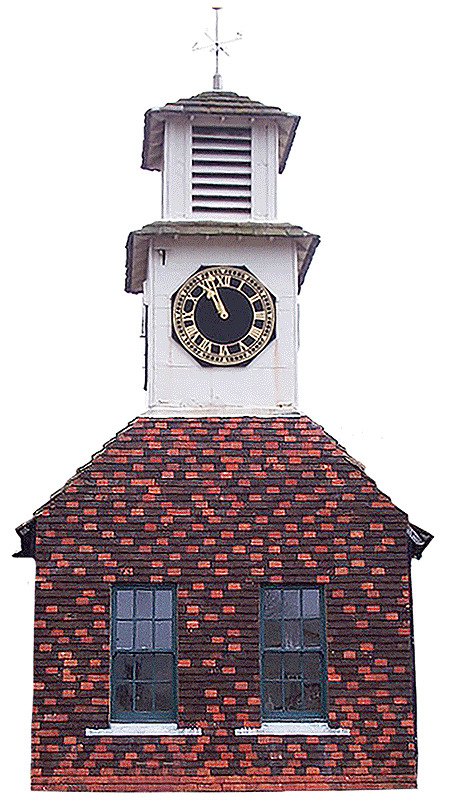Museum Archives: The Stopped Clock and a Cunning Plan
Wednesday 1st February When the Rev John Goring, owner of the Wiston estate, purchased the Market House (now rebuilt at 72 High Street), he may have assumed that his new acquisition included Steyning’s Town Clock above it, although our research suggests otherwise.
When the Rev John Goring, owner of the Wiston estate, purchased the Market House (now rebuilt at 72 High Street), he may have assumed that his new acquisition included Steyning’s Town Clock above it, although our research suggests otherwise.He visited his new property, whereupon he let the house below the clock to Wiliam Chatfield, a vendor of winkles and other shellfish. Next, without any consultation, Rev Goring stopped the Town Clock, which stayed, silent and still at four minutes to six, 'much to the annoyance and disgust of the inhabitants,' as reported in the West Sussex Gazette. on 4th August 1870.
Some years earlier, the previous owner of this property, the Duke of Norfolk, had given the Town Clock and its tower to the inhabitants of Steyning. This fact had been clearly stated in the deeds, but perhaps Rev Goring overlooked it. . . or chose to ignore it.
Indeed, delving through the Wiston archives we can see that he had previously been thwarted in trying to sell the Town Clock to Thomas Stedman, a Steyning watchmaker and winder of the clock.
As a Churchman and local Magistrate, Rev John Goring had always been well known and respected in Steyning. Hence it must have created an uncomfortable situation when he put a sturdy lock on the door of the Clock-Tower, barring entry to Thomas Stedman, and impeding access to the winkle-vendor’s shop.
A police constable was stationed by the locked door, which enraged the townsfolk who promptly appointed Mr. Stedman Chairman of the Clock Committee. He acted immediately by posting a notice that the Clock and its tower belonged to the inhabitants of Steyning and could not be legally sold without their consent.
Furthermore, Stedman’s notice declared that the lock must be removed and free access be given to him to wind and maintain the Clock, returning it to the correct time for the benefit of the community.
Rev Goring ignored these requests for several more days, thereby creating an uncomfortable stalemate.
Finally, some of Steyning’s townspeople conceived a cunning plan. Early the following morning, Mr Chatfield, who may have enjoyed a few pints of free ale, allowed himself to be enticed away from his fish shop and across the High Street to the Chequer Inn, where he was engaged in a lengthy ‘conversation’ with his friends .
When Chatfield at last made his way back home, he might have noticed what everyone else was cheering about - the hands of the clock were no longer stuck at four minutes to six.
The local locksmith had forced or picked the lock, whereupon Stedman had gained access, wound and corrected the time, to the joyous relief of Steyning inhabitants, who could once again order their days by the Steyning Town Clock.